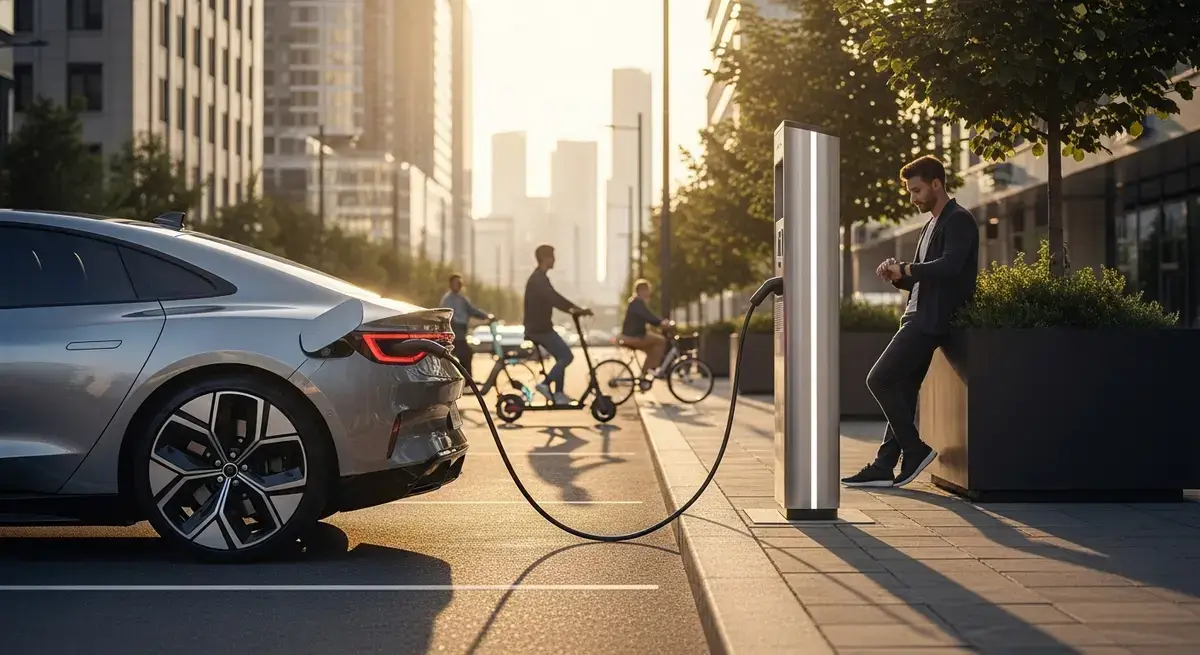How Electric Cars Are Shaping the Future of Mobility
The automotive world is experiencing a groundbreaking shift, with electric vehicles (EVs) leading the way. The future of electric cars goes far beyond just offering greener alternatives—it’s about creating innovative mobility solutions that meet the demands of a sustainability-conscious generation. As climate concerns intensify, understanding the evolving landscape of electric mobility, charging networks, and battery advancements has never been more important. Let’s dive into the key trends transforming transportation as we know it.
Why More People Are Choosing Electric Cars
Consumers are clearly shifting gears. Recent surveys reveal that 42% of potential car buyers want their next vehicle to be electric, driven largely by a growing awareness of environmental impact. In fact, 62% of respondents have already altered their transportation habits to be more eco-friendly. This surge in interest highlights a powerful movement towards electric mobility—not just as a purchase decision but as a lifestyle choice aimed at fostering a sustainable future.
The Electric Vehicle Market Is Poised for Explosive Growth
The numbers tell an exciting story: by 2030, electric vehicles could make up around 15% of all vehicles on the road, including two- and three-wheelers. Impressively, over 90% of those will be electric cars. This rapid growth signals widespread acceptance of EVs as a practical and appealing alternative to traditional gasoline-powered vehicles.
Breakthroughs in Battery Tech and Charging Networks
Batteries Powering the Revolution
At the core of this transformation lies battery technology. The global lithium-ion battery market is expected to soar to a staggering 4,700 GWh by 2030. Yet, there’s still room to improve—buyers want EVs that can comfortably travel around 437 kilometers on a single charge. Meeting this demand means ongoing innovation is critical to extend range and reduce charging times.
Charging Infrastructure: Making EVs More Accessible
Charging stations are the backbone of electric mobility. Germany currently offers about 46,000 public charging points, with ambitious plans backed by government investments, including 300 million euros earmarked for expansion by 2030. These efforts are crucial to ensuring that charging an EV becomes as convenient as fueling a traditional car, encouraging more drivers to make the switch.
New Mobility Trends Redefining How We Move
Embracing Multi-Modal Transportation
Electric cars are just one piece of the puzzle. Around 40% of people already use multiple modes of transport, combining cars, bikes, scooters, and public transit. Micromobility options like e-scooters and electric bicycles are booming, with the market projected to hit $360 billion by 2030. This points to a future where integrated, flexible transportation networks make getting around easier and more sustainable.
Smarter, Safer, and Connected Vehicles
Automation and connectivity are reshaping the driving experience. 34% of potential buyers favor Level 4 automation, which enables highly autonomous driving, while 69% express strong interest in connected car features. These technologies promise not only enhanced convenience but also improved safety, transforming how we interact with our vehicles.
Global Perspectives and Emerging Air Mobility
Leading Markets Driving Innovation
China dominates the EV scene, producing nearly 80% of global battery cells, setting trends that ripple worldwide. Meanwhile, regions like the U.S., Europe, and India are ramping up their own electric mobility initiatives. Understanding these regional dynamics is key to grasping the future of the global EV market.
The Rise of Electric Air Mobility
Looking beyond roads, electric vertical takeoff and landing (eVTOL) vehicles are gaining momentum, with over 8,000 test flight hours logged. Investors are pouring in capital—$4.5 billion in 2023 alone—to develop air mobility solutions that could revolutionize urban transportation, making it faster, cleaner, and more accessible.
Policies and Economic Forces Accelerating Change
The Power of Legislation
Government policies are a driving force behind EV adoption. The European Union’s push for zero-emission vehicles by 2035 is setting ambitious standards. However, shifts in U.S. policy, such as changes in subsidies, present challenges that could influence market growth. Navigating these regulatory landscapes will be critical for manufacturers and consumers alike.
Economic Trends Fueling the Transition
Rising fossil fuel prices are pushing more people toward electric vehicles, prompting German automakers alone to invest an estimated 150 billion euros in electric technology. At the same time, fluctuating global economic conditions may impact the pace of EV adoption, underscoring the need to keep a close eye on broader economic indicators.
As electric vehicles and mobility solutions continue to evolve at a rapid pace, staying informed and adaptable will empower individuals and industries to embrace a cleaner, smarter transportation future.


